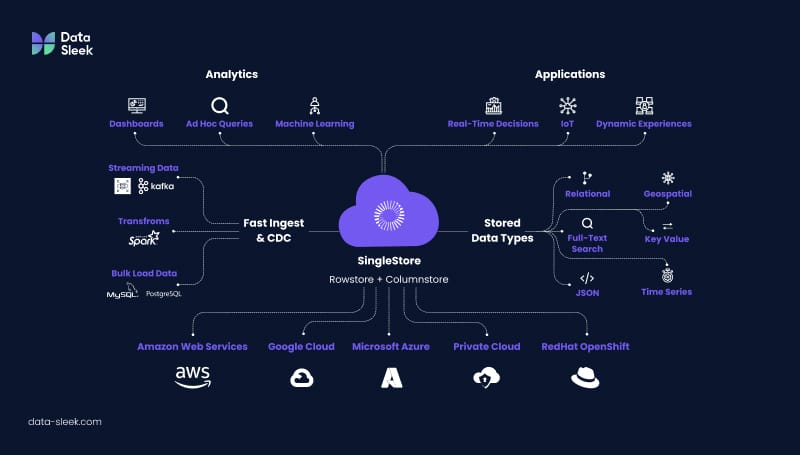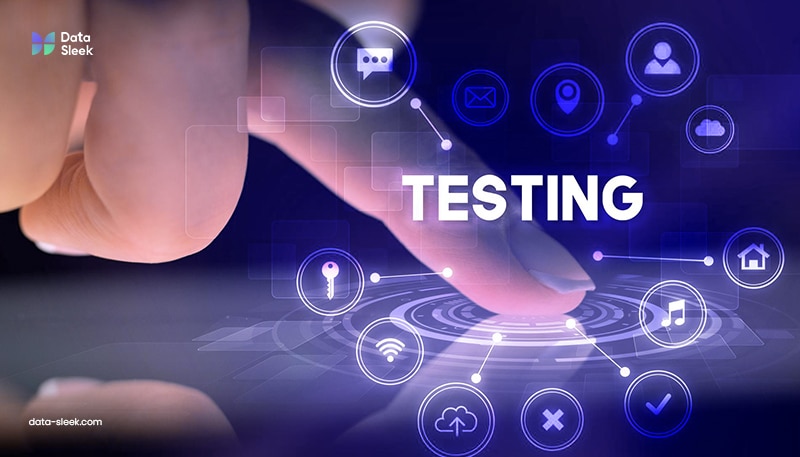If you’re using Rockset for your real-time analytics and have heard about its acquisition by OpenAI, you might be scrambling to find a solid alternative. Don’t worry—SingleStore is a fast and powerful solution for your real-time analytics. Not only does SingleStore match Rockset’s abilities, but it also goes further with faster performance and better scalability.
If you’re one of the many users left scrambling to find an alternative, look no further. We’ll walk you through each step for your Rockset Migration to SingleStore process, explain how this differs from Rockset, and show you how to get the most out of this new database after your migration.
Before starting any Rockset migration, it’s crucial to have a clear plan. Our article on why a database migration strategy is critical explains how a solid strategy can help you avoid common pitfalls, reduce risk, and make your transition smoother. If you’re also evaluating which tools can make this process easier, check out our guide to the Best Database Migration Tools to compare options and find the right fit for your migration.
Why SingleStore Is a Strong Rockset Alternative

Switching from Rockset to SingleStore is a smooth process due to their alignment in handling large data sets and business intelligence use cases, making workload migration easier. Both platforms share core features that simplify the transition, such as:
1. Data Ingestion Compatibility
Both support ingestion from different data sources, such as Apache Kafka, S3, MySQL, and MongoDB. The Pipelines handle high-throughput data ingestion with immediate query ability, similar to Rockset’s real-time capabilities, but with additional parallelization for even faster performance.
2. Data Structure and Transformation
In Rockset, data is stored in collections, which is similar to relational tables. This similarity means that existing data can be migrated directly into tables without major structural changes. Both platforms also support complex SQL joins and transformations during ingestion, making it easier to carry over any real-time transformation logic.
3. Query and Search Migration
While Rockset uses Query Lambdas for running SQL queries, this database system provides similar robust SQL capabilities with additional full-text and vector search support. This is especially important for AI and analytics workloads and ensures that any complex queries and system of record operations can be effectively replicated with added performance optimizations.
4. Transactional Support
For OLTP workloads, this provides full ACID compliance, a feature that Rockset lacks. This makes it a more comprehensive solution, especially if you need transactional support for certain workloads during the migration.
5. Security and Deployment
Both platforms offer strong security features such as encryption and role-based access control (RBAC). However, this allows more deployment flexibility, offering both cloud-based and on-premises options, whereas Rockset is limited to AWS. This can be beneficial if you need more control over your infrastructure during migration.

Key Differences Between SingleStore vs. Rockset
As we already know how seamless it is to migrate from Rockset to SingleStore, it’s also important to look at the areas where SingleStore stands out compared to Rockset. These differences highlight why SingleStore is a top choice for better performance, scalability, and advanced features compared to other Rockset alternatives:
Data Ingestion
Rockset supports fast ingestion but is primarily geared towards real-time analytics and handling unstructured data (e.g., JSON). It transforms data on ingestion but lacks more advanced parallelization techniques. SingleStore, on the other hand, offers high-throughput parallel ingestion using its Pipelines feature, which supports streaming and batch ingestion from multiple sources like Kafka, S3, and Iceberg.
Query Performance
Rockset provides low-latency queries (~70ms on average for p95 queries) and utilizes its Converged Index for fast search and retrieval. SingleStore significantly outperforms in query performance with response times in the single-digit milliseconds (10ms or less). It supports complex queries with joins, aggregations, and filtering, offering far superior performance for both structured and unstructured data.
Scalability and Flexibility
Rockset scales well with compute-storage separation, but its ability to handle large concurrent user sessions is somewhat limited, particularly as the dataset grows. SingleStore excels in scalability due to its three-tiered storage architecture (in-memory, disk, cloud storage) and distributed SQL architecture, which allows it to handle thousands of concurrent user sessions with ease. It also provides built-in auto-scaling, making it ideal for dynamic workloads.
Advanced Search Capabilities
SingleStore supports both vector search and full-text search through powerful indexing mechanisms like IVF and HNSW. These advanced algorithms make it suitable for AI-driven applications requiring precise search capabilities across large datasets. Rockset’s vector search, relying on FAISS-IVF, is less scalable and efficient in comparison.
5. Enterprise Features
Rockset offers some security features like SSO and basic RBAC but lacks the full suite of enterprise-grade features. SingleStore provides robust enterprise security with support for encryption (at rest and in transit), customer-managed encryption keys, and role-based access control (RBAC). It also offers 99.99% availability SLAs, ensuring uptime for mission-critical applications.
Step-By-Step Rockset Migration to SingleStore
For a successful Rockset migration, follow this step-by-step process to help you unlock the full potential of this powerful real-time analytics platform.
1. Prepare Your Data for Migration
Start by exporting your data from Rockset to cloud storage (such as AWS S3, Google Cloud Storage, or Azure Blob Storage). For other databases, you can export your data to formats like CSV or JSON and upload them to object storage. SingleStore supports this import process through its Pipelines feature, which allows for parallel ingestion.
2. Design Your Schema
Since Rockset is schemaless, transitioning to SingleStore’s relational schema requires careful design. SingleStore offers flexible support for various data types, including JSON and geospatial. Make sure to optimize your schema by selecting appropriate shard keys and columnstore keys to ensure data is distributed efficiently across the database.
3. Set Up Data Ingestion
SingleStore’s Pipelines feature allows for fast, parallelized data ingestion. You can create a pipeline using the CREATE PIPELINE SQL command, specifying the source, such as an S3 bucket, and defining credentials. This feature supports high-throughput ingestion while allowing queries to run uninterrupted during the process.
4. Rebuild Queries
If you were using Rockset’s Query Lambdas or specific JSON-based queries, these will need to be rewritten for SingleStore’s SQL environment. SingleStore supports robust SQL queries and integration with APIs, which can handle the same data transformations and queries efficiently.

5. Test and Optimize
Once data ingestion is complete and queries are set up, it’s essential to test the performance. SingleStore’s distributed architecture, combined with features like SIMD vectorization, ensures that complex queries involving joins, aggregations, and filters are handled efficiently. Run performance benchmarks and make adjustments as needed to ensure optimal query performance.
6. Configure Security and Access
SingleStore offers enterprise-grade security features like Role-Based Access Control (RBAC), encryption at rest and in transit, and Customer Managed Encryption Keys (CMEKs). After migration, make sure to configure these settings to protect your data and control access to the database.
Potential Challenges You May Face During Rockset Migration to SingleStore
Migrating from Rockset without expert help can present several challenges that may complicate the process and impact performance. One of the most critical aspects is ensuring a seamless transition without any downtime, a topic we cover in our guide on how to accomplish zero-downtime database migration easily and effectively. Here are the most common ones to be aware of:
Query Rewrite Complexity
Rockset supports Query Lambdas and has its own way of handling queries. Migrating these to SingleStore requires rewriting the queries using SQL. This can be time-consuming, especially for complex queries involving multiple joins or aggregations.
Schema and Data Transformation
You need to carefully map and transform the schema from a schema-less design to relational tables. Mistakes in schema design can lead to performance bottlenecks or incomplete migration.
Ingestion and Integration Adjustments
Both systems support sources like Kafka, MySQL, and S3, but the ingestion processes differ. Adjustments may be needed to transition existing data workflows to the new parallelized ingestion method.
Performance Tuning Post-Migration
Once the data is migrated, optimizing query performance can be a challenge. Configuring advanced indexing options like vector search and full-text search for optimal performance can take additional time and effort.
Data Integrity and Loss Prevention
Data consistency and integrity are crucial during migration. If handled incorrectly, there could be significant risks of data loss or corruption, especially when transforming or ingesting large datasets. Expert oversight helps ensure all are accurately moved and validated.
Experience Effortless Rockset Migration to SingleStore with Data-Sleek Support
Are you one of the many users left scrambling to find a Rockset alternative, but aren’t sure if Singlestore is right for you? Get expert guidance from start to finish with Data-Sleek! Our team of industry experts understand the intricacies and challenges that organizations face. We can help you determine if SingleStore is the best option for your business goals or suggest a better alternative. We’re here to make your migration easy and stress-free!

Don’t let the migration process overwhelm you. Reach out to us today for a free consultation and discover how we can help you transition to SingleStore effortlessly. Let’s work together to enhance your analytics capabilities!
If you’re also evaluating Clickhouse, check out our step-by-step Rockset migration to Clickhouse guide to compare migration paths and find the best fit for your needs.
Frequently Asked Questions
Here are some frequently asked questions about the Rockset migration process to SingleStore.
Does SingleStore use MySQL?
Yes, SingleStore is MySQL-compatible, meaning it supports MySQL-style queries, allowing users to leverage familiar tools and applications. This compatibility facilitates easier migration and integration with MySQL ecosystems.
Can I migrate specific data types, like JSON or time-series data, directly from Rockset to SingleStore?
Yes, you can migrate JSON or time-series data. SingleStore supports JSON as a column type and has capabilities for handling time-series data, though performance optimization may be required depending on your dataset’s structure.
Are there any limitations in SingleStore when handling high concurrency workloads?
SingleStore is designed for high-concurrency environments, supporting thousands of simultaneous user sessions with its distributed SQL architecture. However, you should monitor resource usage and scale horizontally if needed. Configuring sharding and partitioning properly can also help in handling high concurrency without performance degradation.


